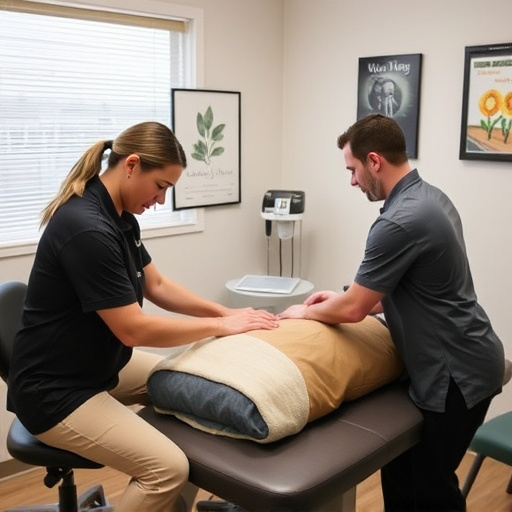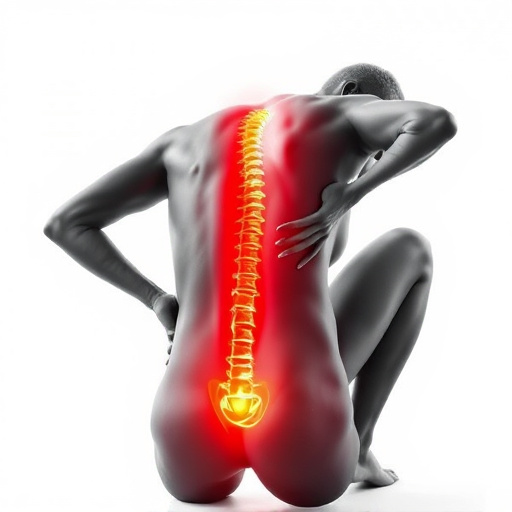Shockwave therapy for pain is a non-invasive treatment using high-energy sound waves to stimulate healing and reduce inflammation in conditions like tendonitis, muscle strains, and arthritis. This quick, painless procedure promotes tissue repair, offering long-lasting relief without injections or medications. Well-tolerated without anesthesia, it accelerates recovery from sports injuries and chronic back pain, with minimal side effects and patients typically resuming normal activities post-treatment. Consult healthcare providers to determine suitability based on individual needs.
“Discover the potential of shockwave therapy as a non-invasive treatment for chronic pain. This innovative approach is gaining traction in the medical community, offering relief where other methods may have failed. In this article, we’ll guide you through the process, from understanding how shockwave therapy works to what to expect during and after each session. We’ll also explore its benefits and considerations, helping patients make informed decisions about their pain management.”
- Understanding Shockwave Therapy for Pain Relief
- What to Expect During and After Treatment
- Potential Benefits and Considerations for Patients
Understanding Shockwave Therapy for Pain Relief

Shockwave therapy for pain relief is a non-invasive treatment that uses high-energy sound waves to stimulate healing and reduce inflammation. It’s become an increasingly popular alternative to traditional pain management methods, especially in the realm of physical therapy and rehab services. During a shockwave therapy session, a specialized device emits acoustic waves that penetrate deep into the body, targeting specific areas affected by chronic pain or injuries. These waves promote tissue repair and can significantly reduce pain levels over time.
This innovative treatment has shown promise in addressing various conditions, such as tendonitis, muscle strains, and arthritis. Unlike some other interventions, shockwave therapy for pain relief doesn’t involve injections or medications, making it an appealing option for those seeking drug-free solutions. The procedure is typically quick and painless, with most patients experiencing minimal discomfort. As with any treatment plan, the number of sessions required varies based on the severity of the condition and individual responses.
What to Expect During and After Treatment

During shockwave therapy for pain relief, patients typically experience minimal discomfort. The procedure involves delivering targeted acoustic waves to the affected area, which stimulates natural healing processes. You may feel a slight tapping or pulsating sensation during the treatment, but it is usually well-tolerated and does not require any anesthesia. After the session, you can resume your normal activities, though light swelling or bruising at the treatment site is possible and typically subsides within a few days.
In terms of post accident rehabilitation or sports injury recovery, shockwave therapy can significantly enhance these processes. It promotes tissue regeneration, reduces inflammation, and accelerates the healing of damaged muscles, tendons, and ligaments. For conditions like chronic back pain resulting from spinal adjustments or other injuries, this non-invasive approach offers a promising alternative to surgery or long-term medication use.
Potential Benefits and Considerations for Patients

Shockwave therapy for pain has emerged as a promising treatment option, offering potential benefits for patients seeking effective pain relief. This non-invasive procedure utilizes focused sound waves to stimulate tissue repair and promote healing in areas affected by chronic pain, such as back pain or joint inflammation. One of its key advantages is the ability to provide long-lasting results without the need for extensive surgery or prolonged medication use.
Considering shockwave therapy can be beneficial for patients who have exhausted other conservative treatment methods. It’s particularly effective in managing chronic pain conditions like tendinopathy, arthritis, and certain musculoskeletal disorders. However, as with any procedure, there are considerations to keep in mind. Potential side effects may include temporary discomfort or mild bruising at the treatment site, and not all conditions respond equally well to shockwave therapy. Patients should consult their healthcare provider to determine if this treatment is suitable for their specific case and to discuss any individual risks or benefits associated with shockwave therapy for pain relief.
Shockwave therapy for pain relief represents a non-invasive, promising approach to managing chronic conditions. By harnessing the power of acoustic waves, this treatment offers potential benefits for patients seeking alternative solutions. Understanding the process and expectations beforehand is key. With its ability to promote natural healing, shockwave therapy could be a game-changer in pain management, providing lasting relief and enhancing overall quality of life.














